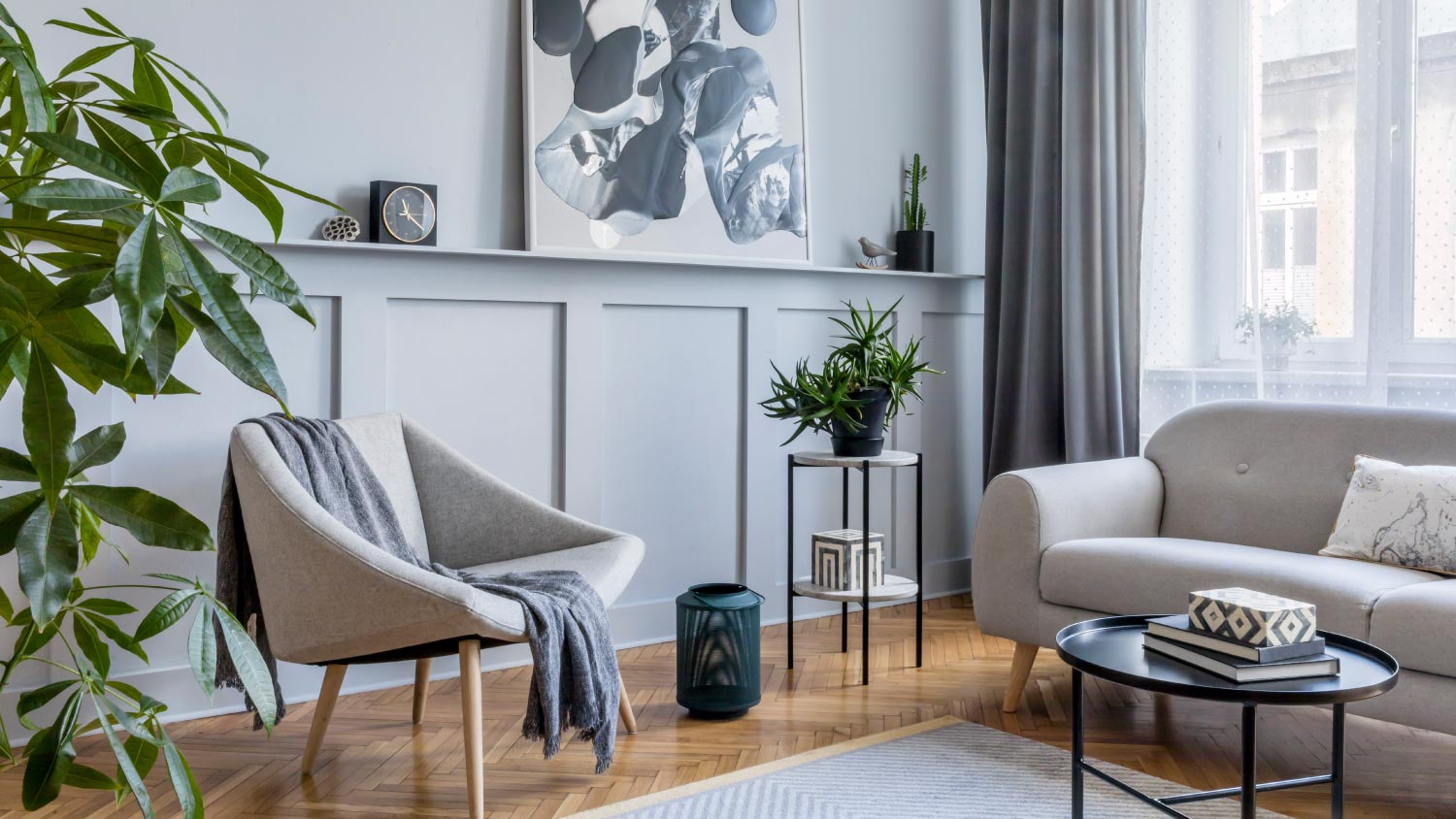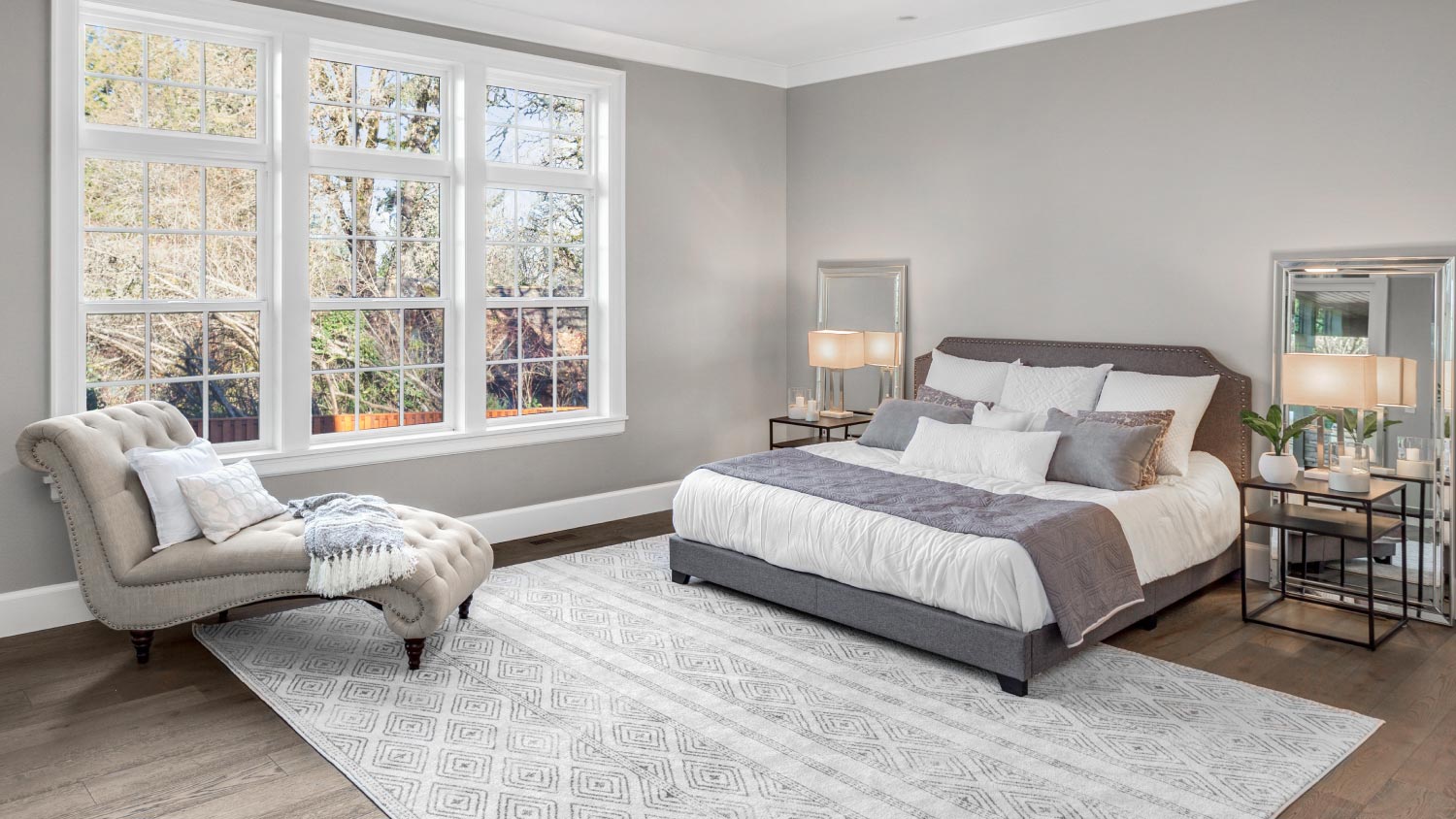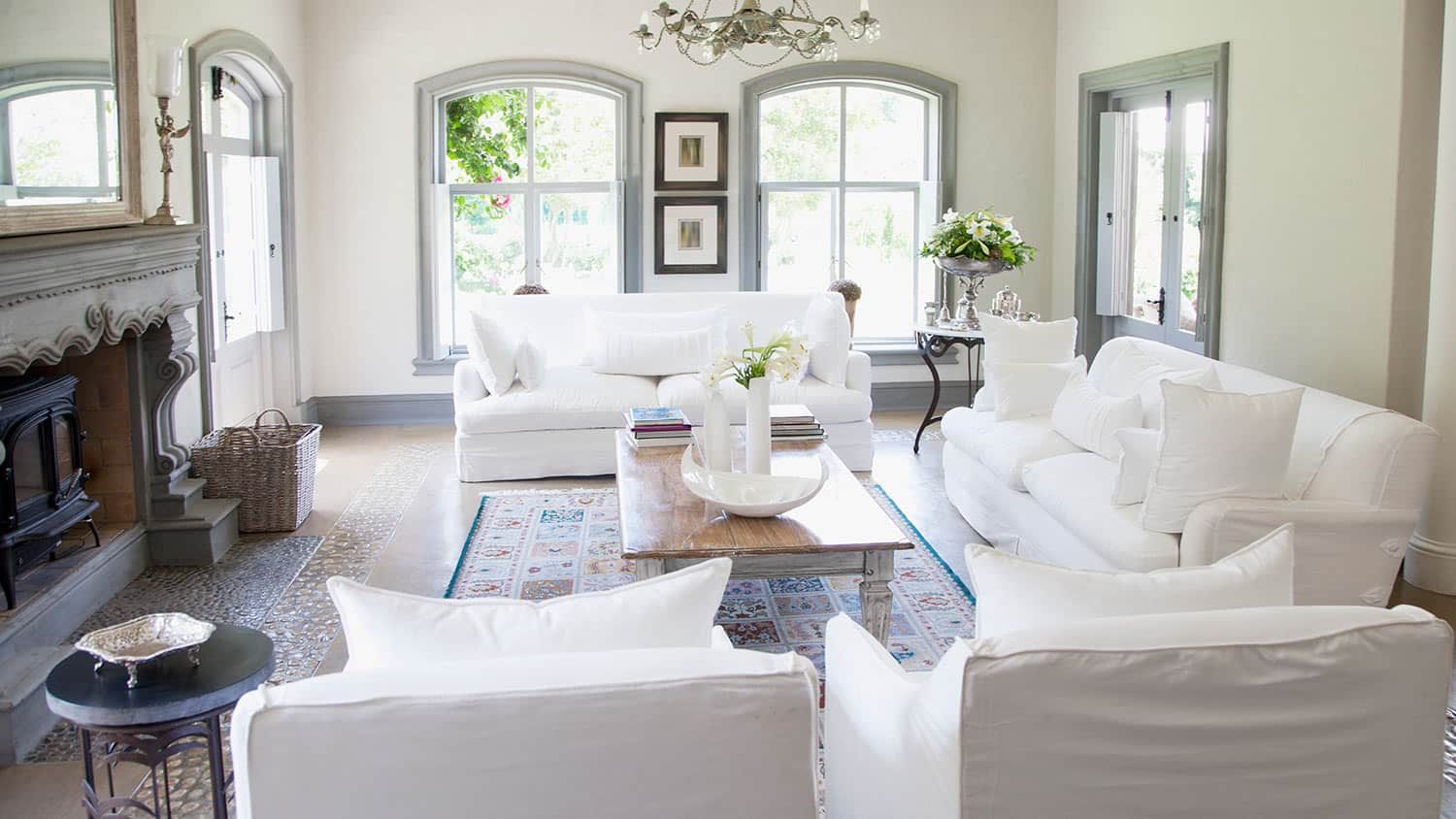Gray Paint or Beige Paint: How to Decide Which Color Is Best for Your Space
Swipe right on the perfect neutral paint color for your home


Gray paint is versatile but has the potential of coming off as too moody.
Once dated, beige paint is rising in popularity again due to Scandinavian design.
Both gray and beige paint are easy to apply and maintain.
If you can’t decide which direction to take, greige is a middle-ground option.
For decades, beige was a go-to color for homeowners seeking a neutral hue for the walls of their house—then gray entered the chat. Nowadays, it’s not hard to find that perfect paint color for your house with a seemingly endless palette from which to choose. The decision isn’t so black and white.
Here’s everything you need to know about gray paint vs. beige paint so you can make an informed decision on which is the better option for you.
Gray Paint Pros and Cons

Considering going gray? The benefits of gray paint are many, from the color’s versatility to its ease of application.
Pros of Gray Paint
There are many arguments for using gray paint, the biggest of which is that it matches almost anything. Whites, blacks, bold colors—there’s hardly anything that gray won’t complement.
Gray walls with white, off-white, or cream trim are not only a clean look for any house, but they’re also versatile for decorating as you can opt for neutral accents or go bold with bright splashes of color via furniture, rugs, and paintings.
Some popular gray paint colors among homeowners and designers alike include:
Cons of Gray Paint
Gray may be trendy now, but what about a few years from now—will it go the way of the white kitchen and seem dated, just as beige felt a decade ago? If that does end up being the case, just know that repainting walls is easy enough for the DIY home renovator and relatively cost-efficient, especially if you keep these home painting tips in mind.
Gray can also give off melancholy vibes akin to living in permanent stormy weather, which is why choosing the right gray for your space is oh-so-important. Installing bright lighting in the room is another way to counter the possibility of gray paint being too moody for your room.
Beige Paint Pros and Cons
.jpeg?impolicy=leadImage)
Maybe you’re married to painting your living room beige, or perhaps you’re still weighing your options. Here’s what you need to consider before you decide if beige is the color for you.
Pros of Beige Paint
For years, beige was on the outs as gray paint rose in popularity. But like all trends, the popularity of paint colors is cyclical, and beige has made a comeback in home decor in the past few years. In large part, this is thanks to the ubiquity of Scandinavian design, which relies heavily on the use of neutral tones.
Beige offers a sense of coziness, creating a hygge environment as the Danes would say, and lends itself well to a warm, intimate living area that frames a crackling fire. And with any color you use in your house, incorporating beige more sparingly at first can give you a chance to test out if it’s a good fit for your home before you go all in.
Looking for that accessible beige paint color that’s a slam dunk? Consider:
Cons of Beige Paint
While there are many merits to using the color beige in your home, if you’re painting a high-trafficked space, beige paint often shows dirt and scuffs more than other colors. Beige can also get a bit monotonous if used in every room of the house, so consider making an accent wall and adding in some colorful art, rugs, and other pieces that break up the routine and will provide a contrast to these neutral paint tones.
Gray Paint vs. Beige Paint
Still debating the merits of gray paint versus beige paint? Here’s how each paint color measures up in the ultimate breakdown.
Cost
The cost of gray paint is the same as the cost of beige paint, so if you’re budgeting for what it will cost to paint the interior of your house, the price will be the same no matter which color you choose.
Most cost-effective: Tie
Appearance
When it comes to appearance, paint color is entirely subjective. Choosing between gray and beige comes down to the right paint color for your personality and is dependent on your home and personal decor style.
For example, if your house is made of wood, you might want to go with a gray paint to offset all the yellow and red tones. But if you live in a midcentury house built of steel and concrete, gray might be an overload, in which case you’d want to go with a beige paint or another color palette entirely.
Most visually appealing: Tie
Ease of Application
If you’re painting over a similarly neutral hue, using beige paint requires fewer finish coats of paint than a darker tone like gray. That said, if you choose to go with a lighter color on the gray, you'll likely end up with the same amount of application work as if you used beige paint.
Easiest application: Beige (by a hair)
Ease of Maintenance
Touching up gray paint versus beige paint will require the same amount of material, time, and elbow grease. The maintenance is dependent on which sheen you choose, with flat being the less time-intensive choice and semi-gloss or gloss being the smartest move for a homeowner with children or several pets.
Easiest maintenance: Tie
Durability
The difference in wall maintenance comes down to the paint sheen, not the color. Whether you use beige or gray doesn’t matter so much as picking a sheen level that matches your lifestyle. Flat finishes are more suited to those without children or pets that easily mar the surface with claws and paws. Semi-gloss or gloss finishes can be easily touched up with regular household cleaning materials whereas a flat finish will require a full repaint to make it look right.
Most durable: Tie
Introducing an Alternative: Greige Paint

Still lost as to whether you should go gray or beige? You can also go greige, which combines the attractive qualities of both gray and beige into a color somewhere right in the middle.
If that doesn’t appeal to you either, consider enlisting the help of a professional local painter or interior designer near you to help you pick the right color for your home.





- Top 9 Stylish and Modern Front Door Colors for Beige Houses
- The Top 4 Paint Colors for Selling Your House for the Best Price
- 6 Beige House and Roof Color Combinations to Add Elegance and Style to Your Façade
- 15 Gray Living Room Ideas That Are Anything but Drab
- 7 Paint Colors for Rooms With Lots of Natural Light
- 9 Garage Door Paint Ideas to Elevate Your Home’s Exterior
- 7 Beige and Tan Exterior House Colors That Are Anything But Basic
- The 7 Best Gray Exterior House Paint Ideas: Choosing the Best Color for Your Home
- 11 Stand-Out Front Door Colors for a Gray House
- 10 Common Painting Mistakes Homeowners Should Avoid










